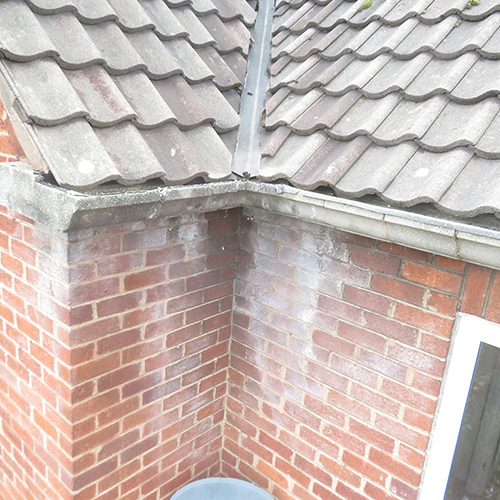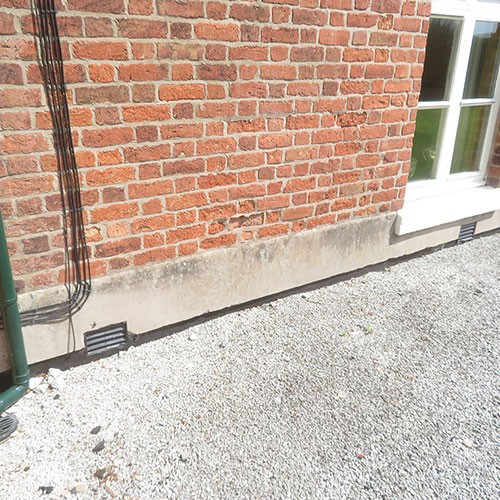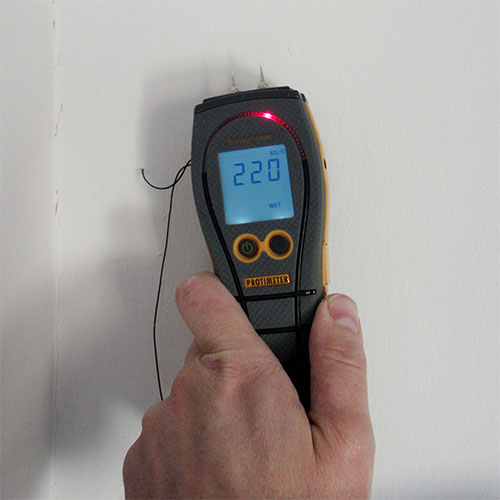Plumb Stone Surveyors can provide detailed damp reports following investigations using a range of testing equipment. Whether homeowners, tenants or buyer, we offer in-depth reports to determine the cause of dampness and appropriate repair advice.

However, it can manifest in many ways, in some cases affecting the building fabric. To determine the causes of condensation it is important that a full inspection is undertaken to assess humidity, temperatures, and dew points.
Risk areas can also be identified with the use of thermal imagery for example. The heating, thermal performance, and ventilation within a building are key factors in managing these matters.

Often this is the result of slipped roof tiles, blocked gutters and cracks to walls.
Once the building fabric has become saturated, water can penetrate the building affecting the internal structure and finishes.
A full assessment of the main external elements and understanding of materials is necessary to identify risk areas.

This can be owing to inadequate drainage, raised external ground levels or indeed, rising damp, amongst other things.
When these walls are unable to freely evaporate this moisture (sometimes referred to as ‘breathability’) this can lead to visible damp issues to the internal faces.
Commonly, such matters have been grouped under the heading ‘rising damp’ and tradespeople recommend introducing barriers to stop this damp.
However, a full understanding of how buildings and materials perform is necessary to fully assess these matters, and correctly identify the sources and causes of damp.
All such investigations and repairs should be carried out in conjunction with the British Standard BS7913.

Much of these pipes and components are concealed within walls and floors.
Inevitably, pipes and fittings can fail and lead to water escaping. These issues will usually only become apparent once damp-related damage is occurring.
To fully assess these issues, it can often require invasive testing techniques, or thermal imagery to identify leak areas.
When dealing with issues of dampness in traditional buildings it is important to understand how these buildings were intended to perform. Building materials were traditionally porous allowing our buildings to be ‘breathable’...
Our traditional housing stock has been largely altered with the introduction of modern materials such as cements, concretes, and plastics. These materials are non-porous and therefore buildings can no longer ‘breath’.
The key to solving issues of damp is by taking a holistic approach and understanding the relationship between these materials. Unfortunately, many contractors often advise installing a chemical damp proof course (DPC) where any ‘damp’ is identified. This approach is not appropriate with traditional buildings and in many cases, counter-productive.
We were contacted by a house buyer purchasing a typical Victorian terrace property in Cheshire. Under instruction of the mortgage lender, the buyer had a Damp & Timber Survey carried out by a national contractor.
The report recommended a chemically injected DPC and internal re-plastering to remedy issues of dampness. Not satisfied with this diagnosis, the client approached Plumb Stone Surveyors.
On inspection we identified the causes of damp being a combination of failed rainwater gutters and raised exterior ground levels ‘bridging’ the original DPC. In consequence, we were able to provide advice on suitable repairs to remedy the root cause of these issues. The repairs required in this case were relatively straightforward and provided a resolution to the issues found, whereas invasive damp proofing works were unnecessary.




© Copyright 2024 | Plumb Stone Surveyors Ltd